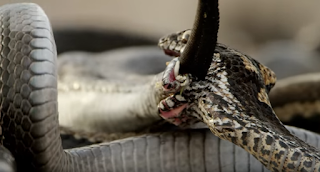Dear reader,
 |
| Screenshot from 15 November showing Blogger's estimate that Life is Short but Snakes are Long reached one million views, which is probably a bit too optimistic. |
As I did last year, I want to thank you for your readership in 2016. Life is Short but Snakes are Long reached three-quarters of a million unique views on September 6th this year, by over 430,000 unique readers from nearly every country. We're currently over 860,000 views and on track to reach one million in 2017. The more liberal Blogger statistics show that we're already at one million, but I suspect that many of these are bots, and I'm sticking with the more conservative estimates provided by Google Analytics. I'm so happy to have reached so many people. Furthermore, at least 34 new species of snakes were described in 2016—another reason to celebrate!
In addition to defending my dissertation and moving to Germany in 2016, I also published 5 scientific papers and co-authored a book chapter for the new 3rd edition of Mader's Reptile Medicine and Surgery, on the behavior of reptiles and amphibians, which will be published in 2017. I became a lot more active in the Facebook Snake Identification and Wild Snakes: Education and Discussion groups, which are fantastic resources for quick, reputable answers to questions about snakes. I recently accepted a position as an Associate Editor of the Snake Natural History Notes section at the journal Herpetological Review, and I was invited to become a curator at the Encyclopedia of Life project, where I've written several short summaries of snake taxa.
 |
| Life is Short but Snakes are Long was voted one of Bel-Rea Vet Tech College's Top 25 Reptile/Amphibian Blogs in 2016 |
Life is Short but Snakes are Long was voted one of Bel-Rea Vet Tech College's Top 25 Reptile/Amphibian Blogs. The students and staff wrote that they particularly appreciated my efforts to reference my sources, and I was really glad to know that others appreciate my efforts to provide verifiable information (apparently there's all too little of that on the Internet these days).
I was particularly glad that the BBC's Planet Earth II featured Galápagos Racers so prominently this year, generating Internet-wide buzz about snakes and their feeding habits, a topic close to my heart. Since I wrote about these interesting snakes back in 2013, a lot of curious people found my blog, inspiring me to write an update and include much more detailed information. I also revisited several other favorite topics, including the relationship between dragonsnakes and filesnakes, rattlesnake roundups, snake penises, and snakes as state/provincial symbols. I have some really good content planned to debut in 2017, including articles on the roles that snakes play in ecosystems, the nitty-gritty details of courtship, sex, and mating in snakes, the little-known and seldom-seen ecology of blindsnakes, profiles of some fossil snakes, and venomous bites from "non-venomous" snakes.
Life is Short but Snakes are Long would not be possible without support from volunteer translators Alvaro Pemartin & Estefania Carrillo, from Utah State University, particularly my advisor Susannah French and the Ecology Center, and from my loving girlfriend and editor Kendal Morris.
Thank you, and happy 2017!
Life is Short, but Snakes are Long by Andrew M. Durso is licensed under a Creative Commons Attribution-NonCommercial-NoDerivs 3.0 Unported License.


















